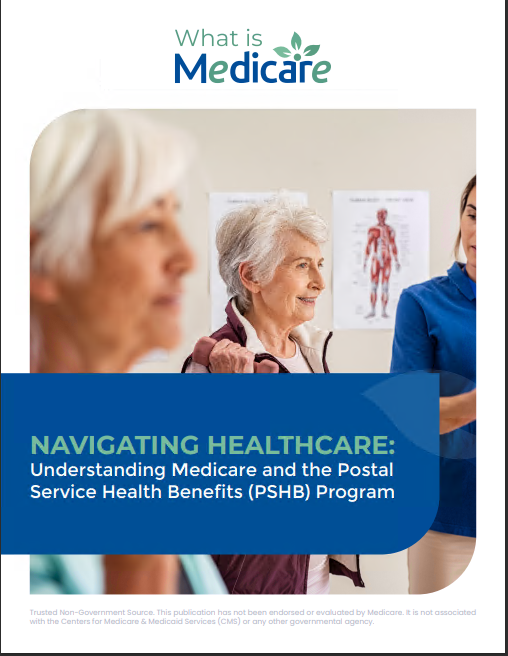Key Takeaways
-
Turning 65 does not automatically qualify you for Medicare; you must meet specific eligibility requirements and, in many cases, take action to enroll.
-
Missing enrollment windows could lead to costly late penalties and delays in coverage that may affect your access to needed care.
Age Alone Isn’t Enough
You might assume that reaching your 65th birthday guarantees Medicare coverage, but eligibility isn’t automatic for everyone. While age is a major factor, there are additional requirements you must meet to qualify—and steps you must take to avoid penalties and gaps in coverage.
Who Qualifies Automatically?
You are automatically enrolled in Medicare Part A and Part B at age 65 only if:
-
You are already receiving Social Security retirement benefits or Railroad Retirement Board benefits at least four months before turning 65.
-
You reside in the United States, including the District of Columbia, Puerto Rico, the U.S. Virgin Islands, Guam, or the Northern Mariana Islands.
If you don’t meet both criteria, you are not automatically enrolled and must actively sign up.
When You Must Enroll Yourself
If you are not yet drawing Social Security or Railroad Retirement benefits when you turn 65, you must proactively enroll during your Initial Enrollment Period (IEP):
-
Starts: 3 months before your 65th birthday month
-
Includes: Your birthday month
-
Ends: 3 months after your birthday month
This gives you a total of 7 months to enroll in Medicare. Enrolling during the first 3 months ensures your coverage starts on time.
Example Enrollment Timeline (2025):
-
Turn 65 in August 2025
-
IEP runs from May 1 to November 30, 2025
-
Enroll by July 31 for coverage starting August 1
If you miss this window and do not qualify for a Special Enrollment Period (SEP), you must wait until the General Enrollment Period (GEP) from January 1 to March 31, with coverage beginning July 1. That can lead to dangerous coverage gaps.
Earning Your Way Into Medicare
Medicare eligibility also depends on your work history and tax contributions:
-
Premium-free Part A: Requires 10 years (40 quarters) of Medicare-covered employment.
-
If you or your spouse meet this requirement, you qualify for premium-free Part A.
-
If not, you can still buy Part A, but the monthly premium in 2025 can exceed $500.
This is a major reason some people are surprised to learn they aren’t automatically eligible.
Still Working at 65? It Changes Things
If you’re employed and have credible health insurance through your or your spouse’s employer, you may delay enrolling in Part B without penalty. However, specific conditions apply:
-
The employer must have 20 or more employees for the delay to be penalty-free.
-
You’ll be eligible for a Special Enrollment Period once you stop working or lose group coverage.
-
That SEP lasts 8 months from the date you lose coverage or leave the job.
Enrolling outside of this window leads to a late enrollment penalty—a 10% increase in your Part B premium for each 12-month period you delayed.
Retiring Abroad? Medicare May Not Travel With You
Even if you qualify for Medicare, the benefits generally do not cover medical care received outside the U.S. If you plan to retire abroad, you’ll need to plan carefully:
-
You can still enroll in Medicare at 65 to avoid penalties.
-
But you may want to consider supplemental international health insurance for care overseas.
-
If you return to the U.S. and didn’t enroll when first eligible, you may face delays and penalties.
What If You Miss the Enrollment Window?
Missing your IEP and not qualifying for an SEP means you must wait for the General Enrollment Period (GEP) from January 1 to March 31 each year. Your coverage then begins July 1, potentially leaving you uninsured for several months.
Penalties can also follow you for life:
-
Part A: If you must pay a premium and delay enrollment, your premium could increase by 10% for twice the number of years you delayed.
-
Part B: The late enrollment penalty adds 10% for each full 12-month period you were eligible but didn’t enroll. This penalty is permanent.
Disability and Early Medicare Qualification
Younger individuals may also qualify for Medicare under specific conditions:
-
Disability Benefits: If you receive Social Security Disability Insurance (SSDI) for 24 months, you’re automatically enrolled in Medicare on month 25.
-
ALS: You qualify for Medicare the same month your SSDI benefits begin.
-
End-Stage Renal Disease (ESRD): Eligibility may begin the first month of dialysis treatment or kidney transplant, depending on your situation.
These are exceptions to the age-65 rule, and enrollment may be automatic depending on your benefit status.
Don’t Confuse Medicare With Medicaid
Medicare and Medicaid are not the same.
-
Medicare is a federal program mainly for individuals aged 65 and older or those with qualifying disabilities.
-
Medicaid is a state-run program that provides coverage for individuals with limited income and resources.
Some individuals qualify for both programs—known as dual eligibility—but income and asset tests apply.
Coordinating Medicare With Other Coverage
If you have other coverage at 65—through an employer, union, COBRA, VA, or TRICARE—it’s critical to understand how it interacts with Medicare. In many cases:
-
Medicare becomes primary when you turn 65, even if you keep other insurance.
-
Failing to enroll on time could leave you responsible for most or all of your medical costs.
Before deciding to delay any part of Medicare, confirm whether your existing plan qualifies as creditable coverage.
Understanding What You Get at 65
Medicare has multiple parts, each covering different types of care:
-
Part A: Hospital insurance (inpatient stays, hospice, some home health)
-
Part B: Medical insurance (doctor visits, outpatient care, preventive services)
-
Part D: Prescription drug coverage (must enroll separately)
-
Supplemental Coverage: Also known as Medigap (covers costs not paid by Original Medicare)
While Part A may be premium-free, Part B always requires a monthly premium. Part D and Medigap also come with separate premiums.
Planning Ahead Is Critical
You shouldn’t wait until your 65th birthday to learn the rules. To avoid penalties and ensure continuous coverage:
-
Check your Social Security status at least six months before turning 65.
-
Review your current health coverage and whether it qualifies as creditable.
-
Know your IEP dates and mark them on your calendar.
-
Compare your Medicare options early and seek help if needed.
Turning 65 Is Just the Start
Your 65th birthday is an important milestone, but not a guarantee. Knowing the eligibility rules and key enrollment periods is essential to avoid penalties, delays, and unexpected costs. Don’t let a technicality or missed deadline leave you without the health coverage you expect. If you need help understanding when and how to enroll, reach out to a licensed agent listed on this website who can walk you through your options and ensure you don’t miss anything.










